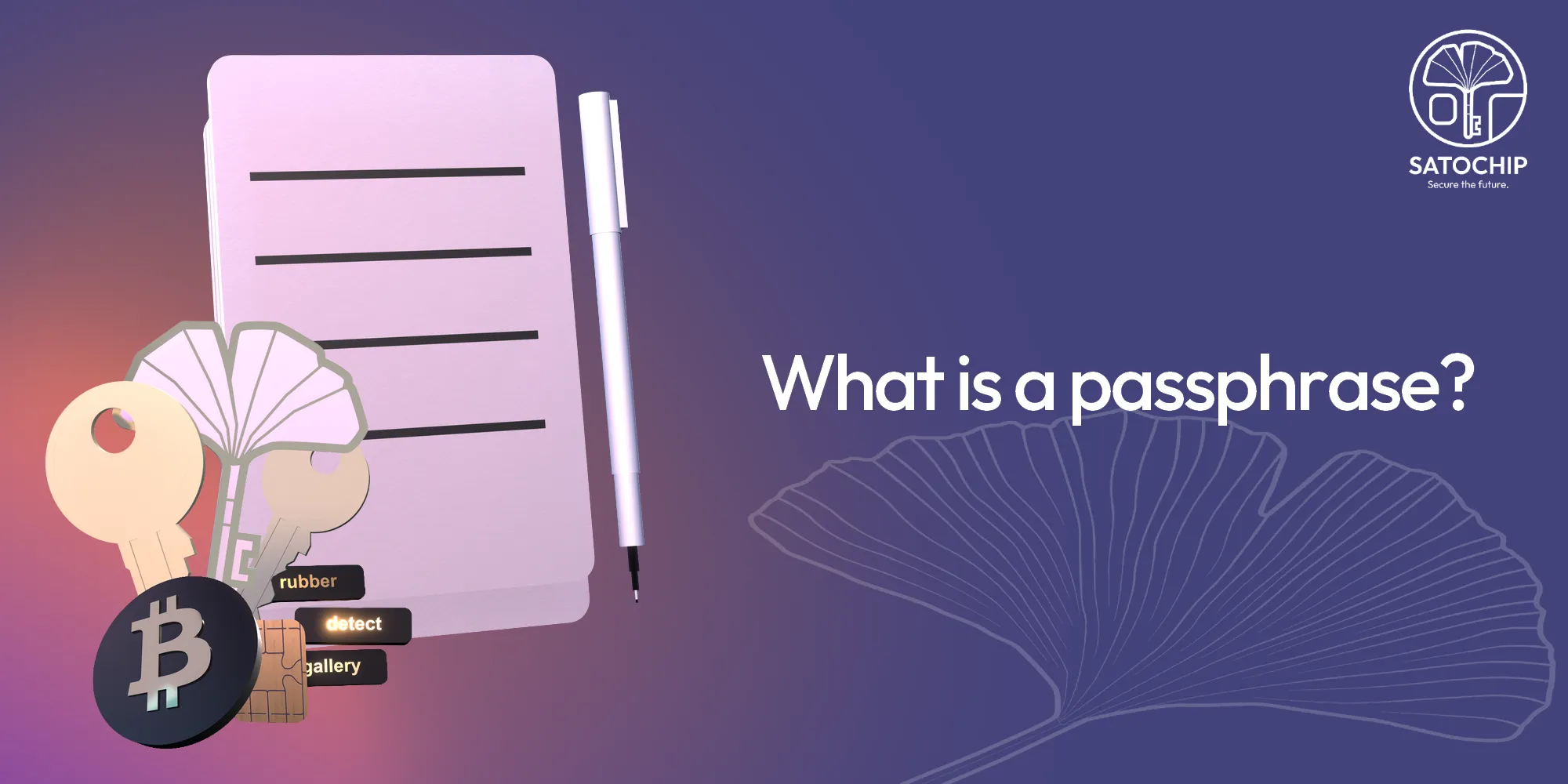What is a passphrase and how to use it ?

Bitcoin passphrase; the little safety “plus”
If you like owning your own funds, you probably already know what a seedphrase is.
If not, or if you’d like to make sure you’ve mastered the basics, take a look at this other article from the Satochip Academy: What is a seephrase?🔗
Today, we’re going to take a look at a concept just as important as the seedphrase, since it complements it: the passphrase.
What is a passphrase exactly?
The passphrase concept as we know it today was implemented with the Bitcoin BIP39 protocol update. Using a passphrase adds an extra layer of security to your wallet.
The passphrase is a sequence of characters (like a password) chosen arbitrarily by the user.
Although there is a limit to the length of this phrase, it is so high that it is only theoretical. You can therefore choose the entire text of your favorite book as a passphrase, and it will be valid. We’ll come back to the best methods for choosing and securing a passphrase in a moment.
Please note: the passphrase does NOT replace the seedphrase. It’s a complementary parameter which, combined with your seedphrase, will generate a different pair of keys (public and private) from those you would obtain using your seedphrase alone.
Once the passphrase has been set up, it must be associated with the recovery phrase – the seedphrase- in order to derive the keys of your wallet.
Knowing only one of these two elements will not give you access to the funds in the wallet. So, even if an attacker manages to discover all 12 or 24 words from your seedphrase, he won’t be able to access your wallet unless he has also guessed your passphrase.
How does the passphrase work?
It’s important to understand that the passphrase is an element that co-constructs your wallet, in collaboration with the mnemonic phrase.
Adding or modifying a passphrase therefore results in the generation of completely different set of keys. To put it simply, it’s not possible to add a passphrase to your usual wallet while continuing to use the same keys and, therefore, the same addresses.
Thus :
- your seedphrase enables you to access wallet A
- your seedphrase combined with your passphrase enables you to access wallet B
- your passphrase alone, on the other hand, does not enable you to create a wallet
The passphrase is therefore a complementary element, but it cannot stand alone.
As you can see, the passphrase is a powerful tool for securing your wallets, and should be used for any wallet in which you hold a substantial sum. But you still need to generate and store it in the right way.
How to choose a good passphrase?
The very nature of the passphrase is to add a layer of security to your wallet. Since you create your own passphrase, you’re free to choose the characters that make it up.
As with passwords, avoid obvious characters such as your department or your spouse’s date of birth, your children’s ages or any other information that could be guessed more or less easily by someone interested in your Bitcoin funds.
So the longer the passphrase is, the more secure it is by nature. But, as with complex passwords, a long passphrase is also easier to forget.
It’s important to understand that adding a passphrase, while adding a layer of security to your portfolio, also increases the risk of losing your funds if you forget it, since you need to ensure that both your recovery phrase – aka seedphrase – and your passphrase are secure.
So it’s crucial to back it up properly. The easiest way to do this is to use Seedkeeper to safely back up your passphrase so you won’t risk losing it.
Ideally, you could produce a backup in an encrypted file (using Veracrypt or TrueCrypt, for example). In this way, you’ll benefit from an excellent backup system, and retain access to your funds whatever happens.
The main benefit of a passphrase
The main advantage of the passphrase is that it allows you to regain control over the generation of your private keys. So, if you don’t have complete confidence in the way your seedphrase is generated, you can regain control by choosing to associate a passphrase of your choice with your wallet.
This way, you can be sure that the keys generated are known only by you, and that it’s impossible for a flaw in the seed generation to allow an attacker to steal your funds!
If you use Sparrow wallet, you can simply check the “Use passphrase” option when creating a new wallet, nothing could be simpler.
Can I reuse the same passphrase?
Even if you use a software wallet without a hardware wallet (as a burner wallet, for example), it may still be worth adding a passphrase to benefit from a higher degree of security.
Obviously, don’t use the same passphrase for all your wallets, as compromising one wallet could result in the loss of all your funds.
Here again, as with passwords, it’s important to opt for sound management of your passphrases. By the end of this article, you should know everything there is to know about how to use passphrases safely and effectively!
Keep learning by consulting other Satochip Academy articles.


